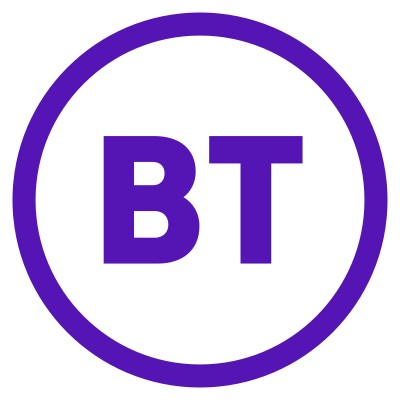How BT Built a Connected Supply Chain Amidst Ongoing Transformation
About British Telecom (BT)

With almost 30 million customers, BT is the largest provider of consumer mobile and fixed broadband communications services in the UK. Behind the scenes, BT Supply Chain has been the backbone of the company’s operations for 30 years, making sure customers get the best experience.
The supply chain division fulfills 40,000 individual customer orders every day, making sure that 32,000 engineers get the tools, parts, and equipment they need to deliver support and services. In recent years, BT Supply Chain underwent a transformation to provide its services to businesses using the company’s existing network.
We spoke with David Mackenzie, Transformation & Inventory Director at BT, to learn more about this shift and the role AIMMS has played in enabling it.
1. David, can you tell us a little about yourself and your role at BT?

Sure, so I have two principal functions in my role. I look after the transformational elements of the BT Supply Chain that involve working with a team of supply chain solution architects and designers, as well as project and program managers. My team supports all the solutions that we produce. We look at new services, systems implementations, and anything involving strategic change and delivering that change.
The other part of my role is supporting the inventory management functions within BT Group, driving decision-making around what we buy when we buy, and where from. Our inventory managers work with demand and supply forecasting across our business.
Until recently, BT Supply Chain was an internal cost center. We then changed our strategy and decided to sell some of our supply chain services in the external market, and we were successful in winning contracts with some major utility and telco customers within the UK.
We started this journey five years ago and had to invest in new infrastructure, new systems, and capabilities. AIMMS was on that list, as it could help us with some of the decision-making to support this change.
2. How is your team currently using AIMMS?
We are using the Network Design Application for two purposes with different data sets:
- The first one is to optimize proximity in our network allocation for engineers. This is mainly taking large populations of engineers, the postcodes of their work area and drive times, and using AIMMS to optimize how we map engineers to different locations. This has been easy to do and quick to implement. It has helped us dynamically optimize our engineer sources as we go.
- The second is to optimize our network of depots, to minimize costs: taking logistics costs from warehouse and transport centers and assessing the implications of volume increases on our network. We have used AIMMS to address questions on depot strategy, for instance. Tackling questions like do we have depots in the right locations? Do we need to have fewer or more depots and what are the implications of doing that? Our initial analysis with AIMMS led us to close a depot, so it proved helpful and useful.
Lastly, we are using AIMMS’ Secondary Transport Costing App to create informed rate cards for customers taking our cost-to-serve into account. Having a modeled view of the cost to serve a particular postcode based on the order size has been incredibly valuable in updating our rate cards and improving the conversations with our customers. We’re aiming to do this on an ongoing basis.
3. It’s interesting to hear about these immediate results. How has the use of AIMMS impacted your operations?
We have effectively been able to expand our network while avoiding cost increases and improving productivity. This has been a big impact.
With network allocation, we have modeled and migrated around 4,000 engineers using the outputs of AIMMS and this has been highly successful in driving engineering productivity. By re-mapping engineers, we have cut drive times in half in some cases – going from over 30 minutes to under 15-minute drive times.
On the network optimization side, we were able to reduce a depot in our network and rebalance the workload on our other sites, reducing property and transport costs.
On the secondary transport side, it’s less about cost savings and more about having a reliable and easy-to-use tool that allows us to have informed conversations with customers about our cost to serve. It’s more of an enabler tool that gives us the insights we need to drive down costs.
4. What did you use before introducing AIMMS?
For rate cards, we used an Excel-based model before which didn’t give us the kind of granularity we needed. We used a transport planning tool that didn’t give us the output we needed either. So essentially, we were manually cranking the handle.
For network design, we used another network optimization product, but that ran on a local-based license, which meant individual installations on every computer. AIMMS is cloud-based, so we could collaborate a lot better. AIMMS also gives us the speed of output and speed of implementation that the other system could not match.
The typical frustration with any person doing network design is that it tends to take six weeks to configure data and get it in. You have to do loads of hard work before seeing any material results. The beauty of AIMMS was that we could quickly put things into a model, come out with an output, go through iterations speedily, and then get to an answer that was a level of magnitude better than what we would have gotten with other products. Simply, AIMMS has improved the speed of decision-making and the type of customer engagement we have.
5. How many people at BT use AIMMS now?
We have three primary users whose roles are aligned across our three use cases. We don’t need a a big data team to do this; just a few specialists. As more use cases come aboard, we expect the number of users will grow.
6. Have you noticed any changes in how these specialists spend their time?
Yes, so before a lot of their time was spent on data production. Today, you still need the right data configured in the right templates, but there is much less time and data required. So you can get outputs more quickly and have better conversations with customers and leads. Because it’s faster and easier to get to an outcome, the emphasis is now more on insights than on manipulating the data.
7. Let’s go back to the transformation program. I’d love to learn more about this. How did you know it was the right time to change your technology vendor?
There are probably two key drivers that led us to AIMMS.
The first is that we have been investing a lot in our access network for engineers and how they collect their tools from our locations. About two years ago, we acquired Pelipod, which is an intelligent locker solution, and we started rolling that out across the BT estate. We’ve now got about 7,500 assets across nearly 1,000 locations. As part of this investment in the product and infrastructure, we wanted to make sure we designed our network in the right way. This led us to look for a tool that would support ongoing network modeling. This was a key component that made it important for us to change.
The second thing is that we had been successful in providing supply chain services to the external market and we wanted to expand on that. Typically, we would go into a bid situation and provide commercial costings, and look into the operational feasibility of these solutions, but we lacked good quality data on the capacity implications of any prospective solution.
We had trouble answering questions like: if we were to onboard a new customer, how would it impact our warehouse or our transport? How can we make sure we have the right capacity and if we have to increase capacity, what does this look like from a cost stance? Have we got the right design to support this new customer?
As we went through this maturity build, we started thinking of our aspirations for the future and realized we needed a strategic tool to do this work. Not least because that’s what our competitors are doing. We know they have large teams with really good supply chain models. So we needed to quickly assess the feasibility of new solutions and work with different alternatives to come up with comprehensive costings at the back of those models.
8. Do you see a potential to use optimization from a strategy point of view?
We see great potential for using optimization at a strategic level. It helps us understand how we can grow our business in a way that makes the most sense from a network optimization standpoint. BT’s business is changing very dramatically at the moment and requirements always come from different aspects of the business. We need to be able to provide quantitative responses to those and confidently say “These are the implications of the decisions we are trying to make.”
We see great potential for using optimization at a strategic level. It helps us understand how we can grow our business in a way that makes the most sense from a network optimization standpoint.
9. Having this opportunity to make these strategic decisions in a better way – what does this mean for you on a personal level?
On a personal level, it’s allowing me to have a different type of conversation with sponsors around the business. A lot of network design decisions have cost implications. We can use AIMMS to get answers we can trust and believe in. These answers add weight to those conversations.
Instead of being “on the fence” about a recommendation, we can now say “Here is the data that underpins our recommendation, and here are two other options on the table that we have discounted because we think this is the right one”. It’s materially enhancing conversations and dialogues. Where we previously would have a well-reasoned opinion to solve certain problems, we now have the data to support a better answer.
10. What’s next on your wish list for supply chain analytics at BT?
I think besides the physical element of our network decision-making, we could use analytics to optimize inventory which is also a big part of our logistics costs. In a supply chain, you can rarely make decisions in isolation. Being able to interlock network decisions with inventory optimization and understanding the end-to-end implications of a decision would be very valuable. Trying to get to that level of optimization across the whole supply chain would be what I hope to develop.





